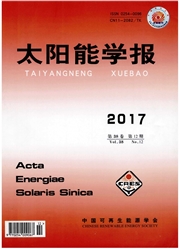

 中文摘要:
中文摘要:
以中国装机容量15MW的生物质直燃电厂为研究对象,计算该系统在整个运行周期(20a)的不可再生能源消耗总量和温室气体排放总量,并与传统燃煤电厂系统进行比较。结果表明:生物质直燃热电联产系统在20a的运行周期中,共消耗不可再生能源1.02×10^9MJ,温室气体的排放总量为3.88×10^4tCO2eq。与传统燃煤火电相比,共减少不可再生能源消耗2.16×10^10MJ,避免1.85×10^6CO2-eq的排放。计算数据表明:生物质直燃热电联产系统具有较好的节能效应,同时又可减少温室气体排放。
 英文摘要:
英文摘要:
The renewability of a 15 MW biomass direct power generation in China is illustrated by a case study of nonrenewable energy cost and greenhouse gas emission. Calculations are made on the basis of results over twentyyear period.And compared the results with the coal-fired power plants. The results calculated the nonrenewable energy cost and greenhouse gas emissions, respectively, as 1.02× 10gMJ and 3.88 × 10^4 t CO2-eq by the biomass power plant, accounting as 2.16 × 10^10 MJ and 1.85 × 10^6 t CO2-eq less than those of coal plants in China, respectively, which indicate the advantages of biomass direct combustion system in terms of sustainability.
 同期刊论文项目
同期刊论文项目
 同项目期刊论文
同项目期刊论文
 期刊信息
期刊信息
